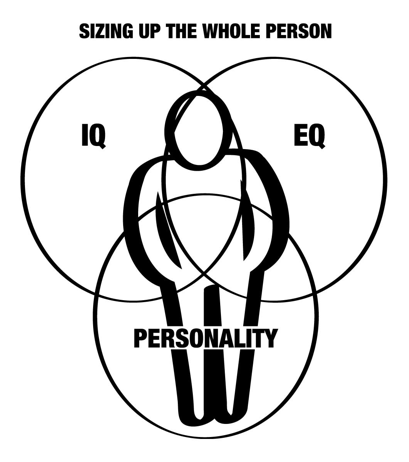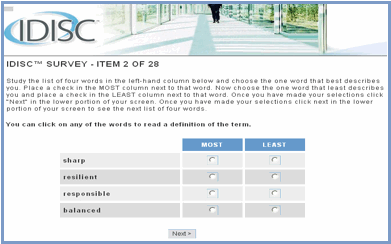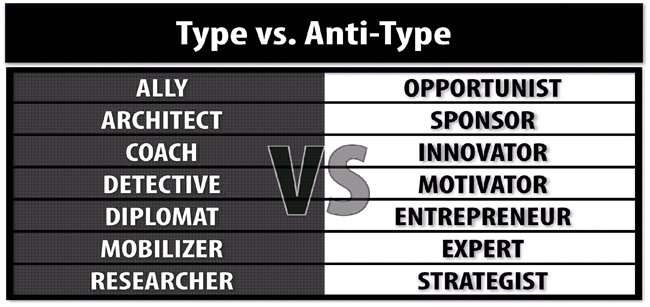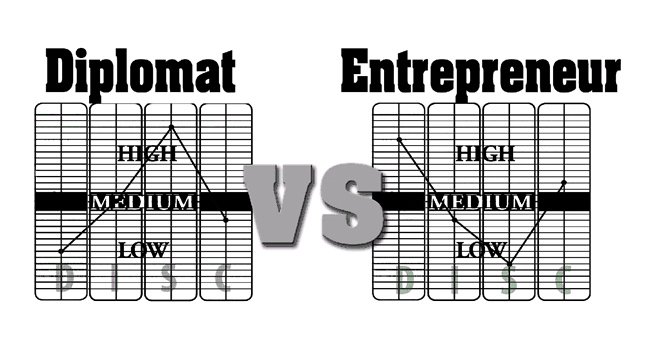Why do you find some people so difficult to get along with at work? Chances are your personalities are a poor match. Personality is often misunderstood. It defines people’s preferences and tendencies for interacting with the world around them. By the time we’re adults, this stable set of behaviors defines who we are and will change less than one percent in a lifetime. Personality conflicts among staff are so common that a survey by HR Executive magazine found that the typical manager spends a full 18 percent of his or her time resolving these. This large chunk of each day could be better spent on the task at hand.
A profession where success in not influenced by the ability to get along with other people is hard to imagine. This ability is needed especially in workplaces today, where teamwork is vital to get things get done. Unfortunately, when you bring a group of people together, conflict is bound to follow. Some clashes are unavoidable, but most are fueled by a simple lack of understanding.
Why do our views and intentions often differ so sharply at work? First, our brains are hard wired to assume that other people’s motivations are the same as our own. It’s natural to assume that our colleagues think as we do. If they do something we don’t agree with, we quickly reach the conclusion that their actions are careless, insensitive or just plain wrong.
Too often, we fail to consider the reason for our colleagues’ behavior. It’s easier to assume weakness or ill-will on their part, than to stop and discover the motivation for their actions. When our colleague’s personality type is similar to our own, even if not a perfect match, we are far more likely to react in the same way to things and think along similar lines. As the gap between our personalities widens, our opinions diverge more frequently.
Personality is an important part of the whole picture for understanding any individual. The image below is a useful way of showing how, in the workplace, soft skills (EQ), intellect (IQ), and the stable style each of us has for relating to the world around us (personality), are distinct but interacting. An assessment of emotional intelligence and personality in tandem can provide a well rounded view of a person’s skills and the inherent traits that drive much of their behavior.

Getting along with co-workers requires awareness and understanding. The best way to understand your coworkers clearly and objectively is through a valid assessment of their behavior. This is where the IDISC™ Personality Profiler comes in. The IDISC™ examines the motivations for people’s behavior along the four unique dimensions of their personality. Though these personality traits represent needs that are important to everyone to some degree, knowing which tendency is predominant in any person is the key to understanding personality.
The IDISC™ presents a series of 112 adjectives that are paired into 28 groups of four. As you move through each quartet of words, you are forced to choose one from the set that gives the best description of you and another from the set that gives the worst description of you. This process takes about 20 minutes to complete, and your results include a complete e-learning program that merges clips from movies, television, and real world events to illustrate personality in action.

The IDISC™ also introduces you to your anti-type. Each personality profile has a nearly polar opposite that, though it doesn’t preclude the two from connecting, it guarantees that understanding each other is going to be a bit of work. It’s tempting to throw a wall up when people don’t seem to share our motivations and tendencies. And the more disparate the personality profiles are of any two individuals, the more likely they are to have trouble connecting.

The IDISC™ breaks the 14 DISC personality types into seven opposing pairs. Each of these type/anti- type pairings brings together two profiles whose core motivation—their essence for being, if you will—is fundamentally opposed.
The graph of each type/anti-type pairing’s DISC levels helps illustrate why they clash. By studying the explanations behind the seven type/anti-type pairings, you’ll learn why two people can butt heads so easily and how simply conflict can be avoided. The type/anti-type pairings aren’t a guarantee that two profiles will clash, but rather, they provide a means to understand why they often do.

With the new self-scoring IDISC™ booklet, your entire team can sit around the conference table and take the test together, discussing the results on the spot. Each booklet also includes access to the same e-learning program that comes with the online version of the test. Who knows? A little understanding just might be what your team needs to take its performance to new heights.
ABOUT THE AUTHOR:
Travis Bradberry, Ph.D.
Dr. Travis Bradberry is the award-winning co-author of the #1 bestselling book, Emotional Intelligence 2.0, and the cofounder of TalentSmartEQ, the world’s leading provider of emotional intelligence tests and training, serving more than 75% of Fortune 500 companies. His bestselling books have been translated into 25 languages and are available in more than 150 countries. Dr. Bradberry has written for, or been covered by, Newsweek, BusinessWeek, Fortune, Forbes, Fast Company, Inc., USA Today, The Wall Street Journal, The Washington Post, and The Harvard Business Review.
Lac D. Su, M.S.
Lac D. Su is the Director of Strategic Alliances for TalentSmartEQ, the leading provider of emotional intelligence tests, products, and training. He forms and manages relationships with key TalentSmartEQ resellers and assists clients with the implementation of skill development initiatives.